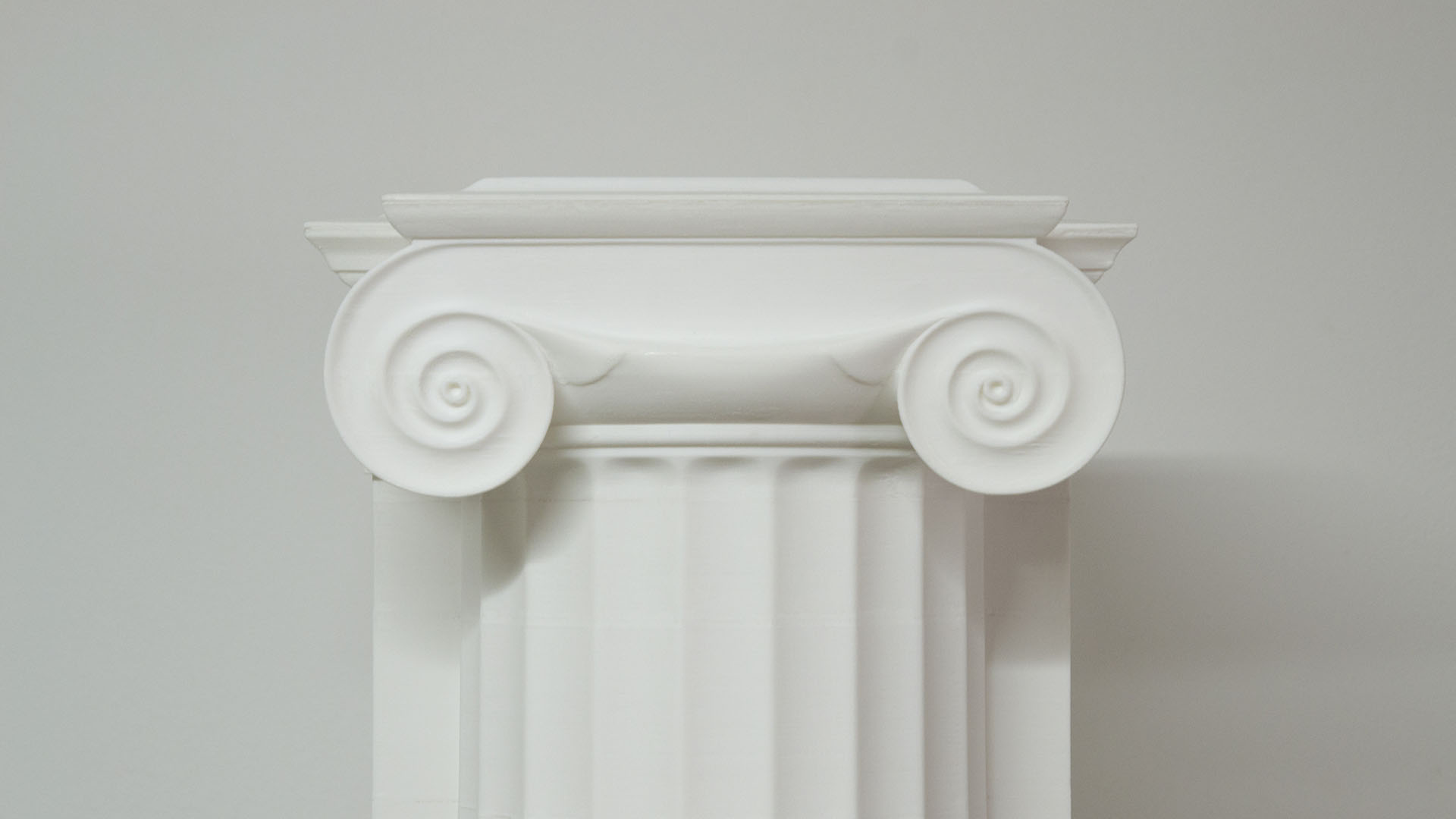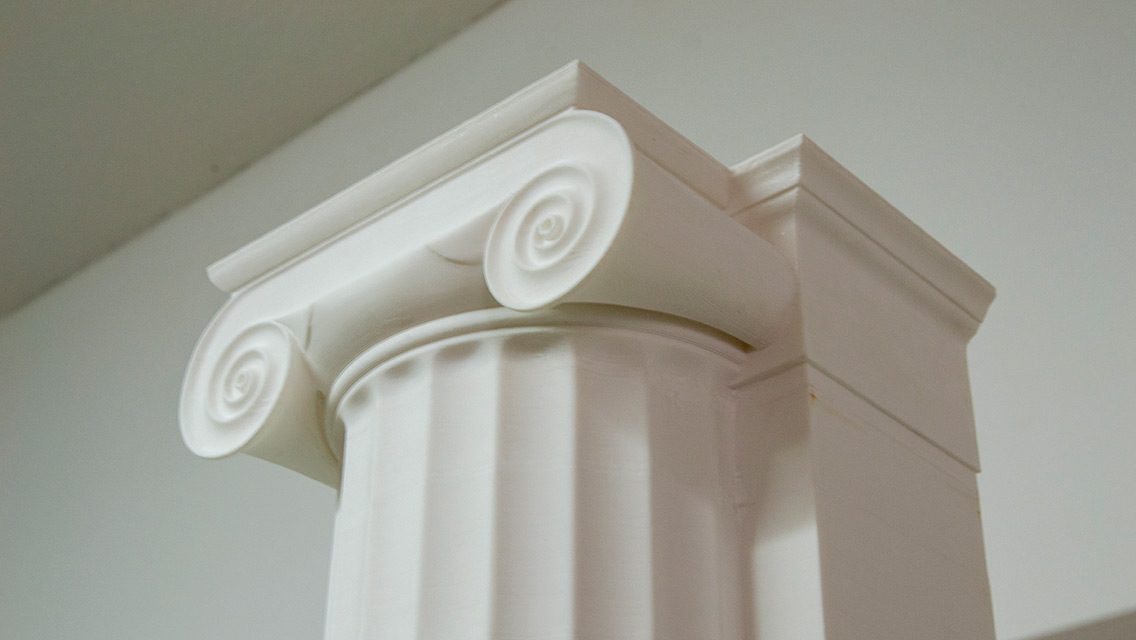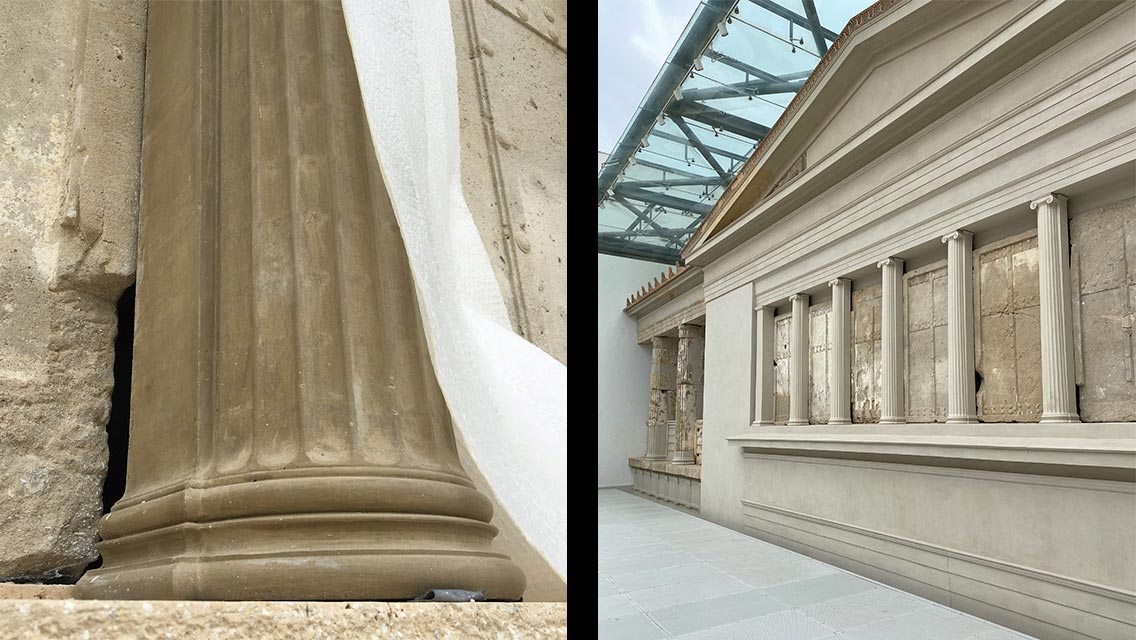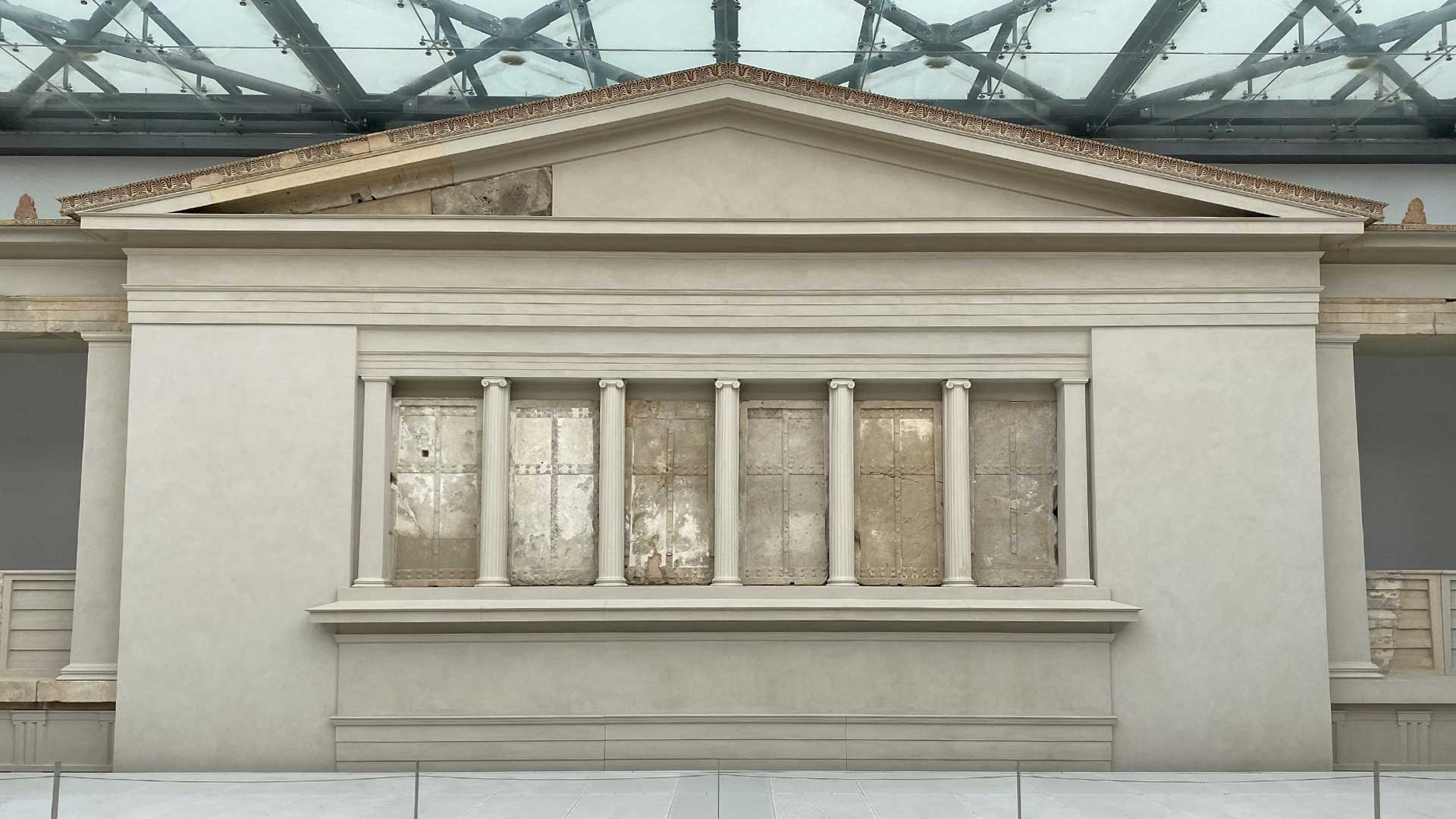
Ionian Column
3D-Printed Mold
The project entails the comprehensive design and precise 3D printing of an Ionic Column, a prominent architectural component from the second-floor facade of the Palace of Aegae. This printed column serves as a master form for producing a high-fidelity silicone mold, enabling the casting of final columns in mortar. These mortar columns are then carefully installed on the restored facade, which is prominently displayed in the courtyard of the Polycentric Museum of Aegae in Vergina, recognized as one of the museum’s most significant exhibits.
The column, standing at approximately 2,216 mm, was divided for printing into 45 transverse sections, each around 50 mm in height. These sections were later meticulously assembled to form the complete column. A notable aspect of the column’s geometry is its varying cross-sections; each slice along the height has unique dimensions, averaging around 350×360 mm. This complex, variable geometry required careful segmentation and alignment to ensure structural fidelity and aesthetic accuracy.
Fused Deposition Modeling (FDM) technology was selected for its reliability in creating durable, detailed prototypes, with Polylactic Acid (PLA) chosen as the printing material to achieve high resolution and smooth finishes. The entire printing process demanded approximately 1,200 hours, reflecting the column’s intricate detailing and structural complexity essential for the authenticity of the restoration.
The column, standing at approximately 2,216 mm, was divided for printing into 45 transverse sections, each around 50 mm in height. These sections were later meticulously assembled to form the complete column. A notable aspect of the column’s geometry is its varying cross-sections; each slice along the height has unique dimensions, averaging around 350×360 mm. This complex, variable geometry required careful segmentation and alignment to ensure structural fidelity and aesthetic accuracy.
Fused Deposition Modeling (FDM) technology was selected for its reliability in creating durable, detailed prototypes, with Polylactic Acid (PLA) chosen as the printing material to achieve high resolution and smooth finishes. The entire printing process demanded approximately 1,200 hours, reflecting the column’s intricate detailing and structural complexity essential for the authenticity of the restoration.
Preparation of the 3D-printed parts for assembly. The process involves meticulous sanding, bore cutting and drilling.


The capital of the Ionian half-column is designed based on the photogrammetry data of existing architectural elements found on the archeological site.
The 3D-printed columns serve as the basis for creating silicone molds, where the final columns are cast in mortar and subsequently placed in their original positions.

